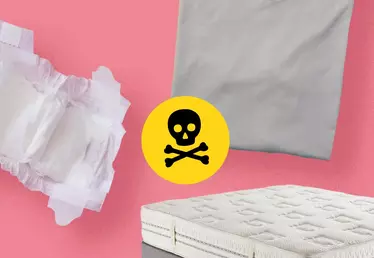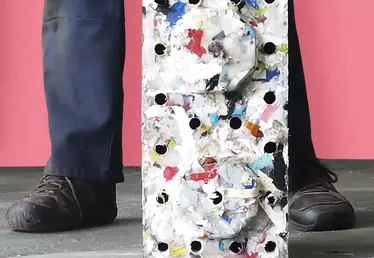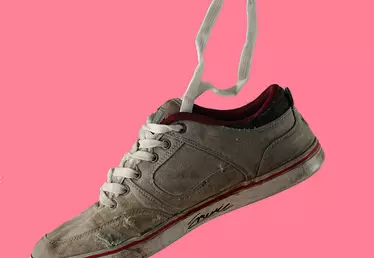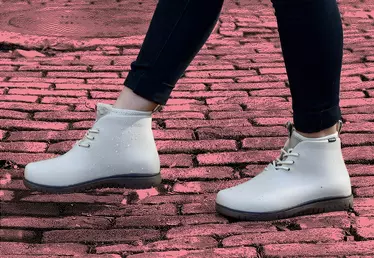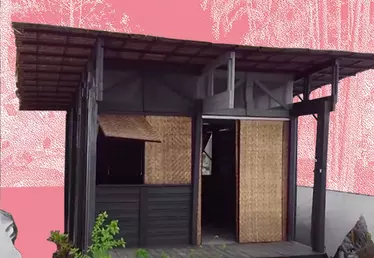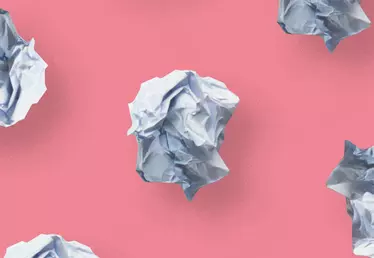

Hero banner custom title
24 hours In the (end of) life of a plastic bottle
10 min
Discover the short and long history of this common, everyday item.
Plastic bottles are by far one of the most discarded items and a huge source of pollution. At the current pace, by 2050, there will be more plastic than fish in the ocean! But with proper recycling, we can give plastic bottles a whole new (end of) life, as outlined below.
A life of just a few minutes: sound frightening? That’s the average lifespan of a plastic bottle. Most of which are used only once, even though a million are sold every minute worldwide: bought on a whim, drank in a moment and tossed out just as quick. But this waste item could get a second life… All it takes is to place it in the right bin – the recycling – so it can be collected and taken to the right processing center.
Once there, bottles are sorted by material type on a conveyor belt by machines that weigh them or record their color. Clear bottles, like water bottles, are generally made of PET, or Polyethylene Terephthalate, a plastic made from fossil fuels: it takes about 1.9 kg of crude oil to produce 1 kg of this plastic.

© Médiathèque Veolia - Alexandre Dupeyron
A gift and a curse
Until the 1950s, liquids were transported in glass bottles. "Then the oil industry developed and created plastic, a by-product of using this fossil fuel," says Nicolas Marty, a historian at the University of Perpignan in France. "But it wasn't until the 1970s that we saw a complete transformation: the expansion of mass distribution pushed bottling companies to switch to plastic - which is lighter - to reduce transport and storage costs, notably by eliminating the need for space to store reusable glass bottles." This societal change came alongside a discovery made by the American chemist DuPont de Nemours, who invented a lighter, more economical, stronger and less expensive bottle: made of polyethylene terephthalate (PET). It was an immediate success in the United States and quickly spread throughout the world within 20 years, at the same time that major beverage brands, such as Nestlé and Coca Cola, were going global and radically changing our habits... From that moment on, anyone and everyone could have their own drink, whenever and wherever they wanted, thus bringing the world into the era of disposability.
But the advantage of PET is that it can be recycled. Once sorted, the bottles are compressed into large bales, which are then broken up and ground into flakes. "Bottles are washed with hot water at industrial facilities in a much more water-efficient way than what any of us can do at home, hence the need to throw bottles away without washing them," insists Marc-Antoine Belthé, Director of Recycling and Waste Recovery and Specialty Subsidiaries at Veolia in France, an entity that handles non-hazardous waste. This is also the stage where plastic caps and bottles are separated using… water! Submerged in separation tanks, the cap flakes float, while the heavier bottle flakes sink.
A process that cannot be repeated indefinitely – yet
Next, the main process can begin: extrusion. "A tube with an auger is heated, the flakes are placed at the head of the tube, the auger turns and pushes the flakes as they melt and mix together again. At the end of the tube, we obtain something resembling a plastic sausage. This is then cooled and cut into uniform granules," explains Marc-Antoine Belthé. The granules are later sold as raw material to industrial companies, where they are used to make polyester fiber (fleeces, plush, comforters, anoraks, etc.), other plastic objects (pipes, etc.) or new plastic bottles. Granules from the plastic caps, which are darker in color, can be used to make buckets or plastic furniture, for example. In the end, making bottles from 100% recycled plastic uses 75% less energy than creating bottles from new plastic, according to the British Plastics Federation (BPF), an organization representing the plastics industry in the UK.

© Médiathèque Veolia - Jean Marie Ramès
The caveat, however, is that the operation cannot be repeated indefinitely. "After a while, the molecular chains break down through gradual wear and tear so to speak, meaning that a bottle can only be recycled a limited number of times," Marc-Antoine Belthé points out. But innovative companies are working to improve this process. In France, the start-up Carbios has developed a new process that allows food bottles to be recycled over and over again: it uses an enzyme that "cuts" the PET molecules and returns them to their original state, in the form of a powder and a liquid. When these two compounds are mixed again, new plastic is formed.
Rethinking practices
For now, the main problem remains collection. But the varying situation in different countries suggests that certain improvements are in fact possible: in the United States only 30% of plastic bottles are recycled. In France, where local authorities in charge of sorting waste benefit from recycling subsidies funded by a tax on manufacturers, "the recycling rate (i.e., recycled bottles compared to the total market volume) is 55%," explains Sophie Génier, Director of Recycling Services at Citéo, a French social service company created by a consortium of companies in consumer goods and retail distribution to reduce the environmental impact of packaging. This figure rises to 97% in Norway, for example, which has an efficient deposit system and a progressive environmental tax for producers. To catch up, the European Union has set a target of collecting 77% of plastic bottles by 2025 and 90% by 2030. PET bottles will also have to incorporate 30% recycled plastic by 2030.
30%
In the United States, only 30% of plastic bottles are recycled.
Beverage companies are also beginning to rethink their practices. In the United States, Coca-Cola, one of the largest producers of plastic waste, recently committed to selling only bottles made of 50% recycled plastic by 2030. Danone is aiming to use recycled plastic for all its water bottles in Europe by 2025.
From a revolution, plastic bottles have evolved into an enormous scourge in the last twenty years. One third of plastic waste, or 100 million tons, ends up in nature every year, according to the WWF. No other industry has experienced such growth: today, 481 million plastic bottles are produced every year, compared to 2.3 million in 1950... In addition to the waste, making a plastic bottle takes three times as much water than the bottle can even hold. Not to mention that its production from fossil fuels pollutes and wastes energy.
Every year, one third of plastic waste ends up in nature.
Nevertheless, plastic bottles can come in handy in countries where the population does not have access to drinking water, which includes 2.2 million people worldwide. For this reason, certain countries or municipalities have decided to take matters into their own hands. The mayor of London is developing a water fountain network. Some cities (Concord in Massachusetts, San Francisco and Los Angeles in California, Bundanoon in Australia), public parks, universities or museums have banned plastic bottles. Kenya has banned single-use plastics in public squares and national parks since 2019.
At the end of the day, the best waste is no waste at all. "Whatever type of packaging we use, societies should consume less, and to make that happen, public education is key," notes Thomas Stanton, senior lecturer in environmental science at Nottingham Trent University in England. And everyone can do something about it. The next time you go out, consider sliding a reusable metal water bottle into your bag.








